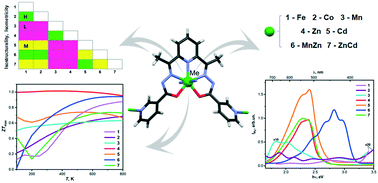Metal ions impact on the isostructurality and properties of 2D coordination polymers†
Abstract
Two new 2,6-diacetylpyridine bis(nicotinoylhydrazone) coordination polymers with the general formula {[MIIL]·xsolvent}n, in which MII = Fe, Co, were prepared solvothermally and characterized by various methods. Both compounds exhibit isostructurality with different solvents with our previously reported homo- and heteronuclear coordination layers (MII = Mn, Zn, Cd, MnZn, Zn0.75Cd1.25). A comprehensive investigation of the isometricity revealed the existence of a high degree of similarity for five pairs, medium similarity for six pairs, and low similarity for ten pairs. Despite the fact that the Mn(II) and Zn(II) coordination polymers are isostructural to each other, they are enantiomers of other compounds. The photoluminescence study was performed on all seven compounds and some of them were found to exhibit high photoluminescence intensities. Density functional theory has been used to estimate the nonlinear optical and thermoelectric properties of the given series of coordination polymers. It has been shown that, regardless of the different degrees of isostructurality of the studied coordination polymers, their properties significantly depend on the nature of the metal ions.

- This article is part of the themed collection: Open Access in CrystEngComm


 Please wait while we load your content...
Please wait while we load your content...